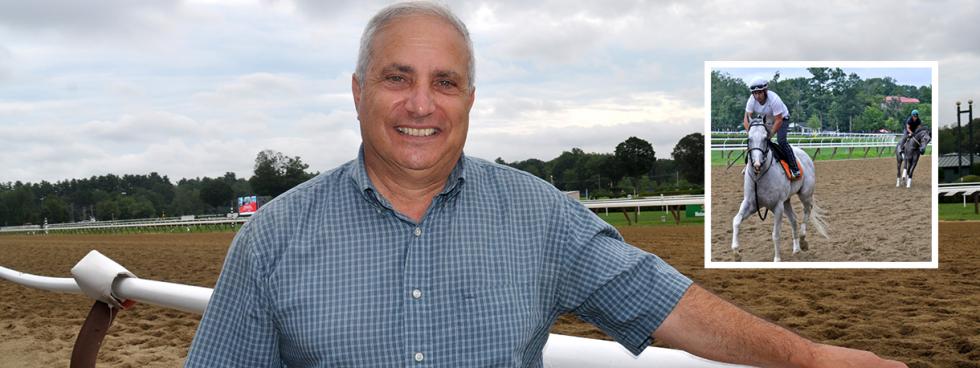
If there is a significant horse race in the state of New York, you can bet Dr. Anthony Verderosa (DVM ’87) will be there.
As the chief examining veterinarian of the New York Racing Association, Verderosa and his staff enforce the rules of racing and decide which horses can compete. That includes the Belmont Stakes, the third leg of horsing’s Triple Crown series, and The Travers, a major stakes race held at Saratoga, the nation’s oldest race track.
Each year Verderosa splits his time between race tracks at Belmont, Saratoga and Aqueduct, overseeing the racing seasons at each location. In addition to the Belmont Stakes, there are 35 racing days in both the spring and fall at Belmont outside of New York City, while the season lasts eight weeks in the summer at Saratoga. There’s six months of racing at Aqueduct with approximately 100 days of competition.
Verderosa has been with the New York Racing Association for over 20 years, becoming the track’s leading veterinarian in 2005. On a typical day, he and his team will each pre-race examine up to 30 horses well before patrons make their way into the grandstands.
“We determine to the best of our abilities if a horse is sound enough to race,” Verderosa said. “We’re out there rain or shine. It takes us about five minutes to conduct the pre-race exams and we conduct the same exam if it’s the first race of the year or if it’s the Belmont Stakes.
“Sometimes trainers will argue with you if we need to scratch a horse, but we make the ultimate decision if a horse races or not. We don’t scratch a horse unless we have a valid reason.”
But their day doesn’t end there. The veterinarians make their way to the track where they will stay through the day’s racing schedule. Verderosa oversees a trackside equine ambulance.
“If an injury occurs on the track, we stabilize the horse as quickly as possible before moving it back to the barn area,” he said.
Due to these precautions, the three New York horse tracks have the lowest injury rate in the country.
The Belmont Stakes and The Travers are national events, but Verderosa says he and his staff treat each race the same.
“We give no more or less scrutiny to the horses in the Belmont Stakes or The Travers than any other race,” he said. “Stakes days are a bit longer and the crowds are much bigger, but it’s just another day for us.”
This is a much different job than Verderosa’s previous positions. After graduating from Iowa State, Verderosa worked for an equine practitioner in Kentucky and had his own equine practice in the Miami area before moving back to his native New York.
“The scope of what we do at Belmont, Saratoga and Aqueduct is a little different,” Verderosa said. “We don’t have 24-hour days, generally no late night emergencies.
“It’s been a great job being able to work at these tracks.”
November 2019
